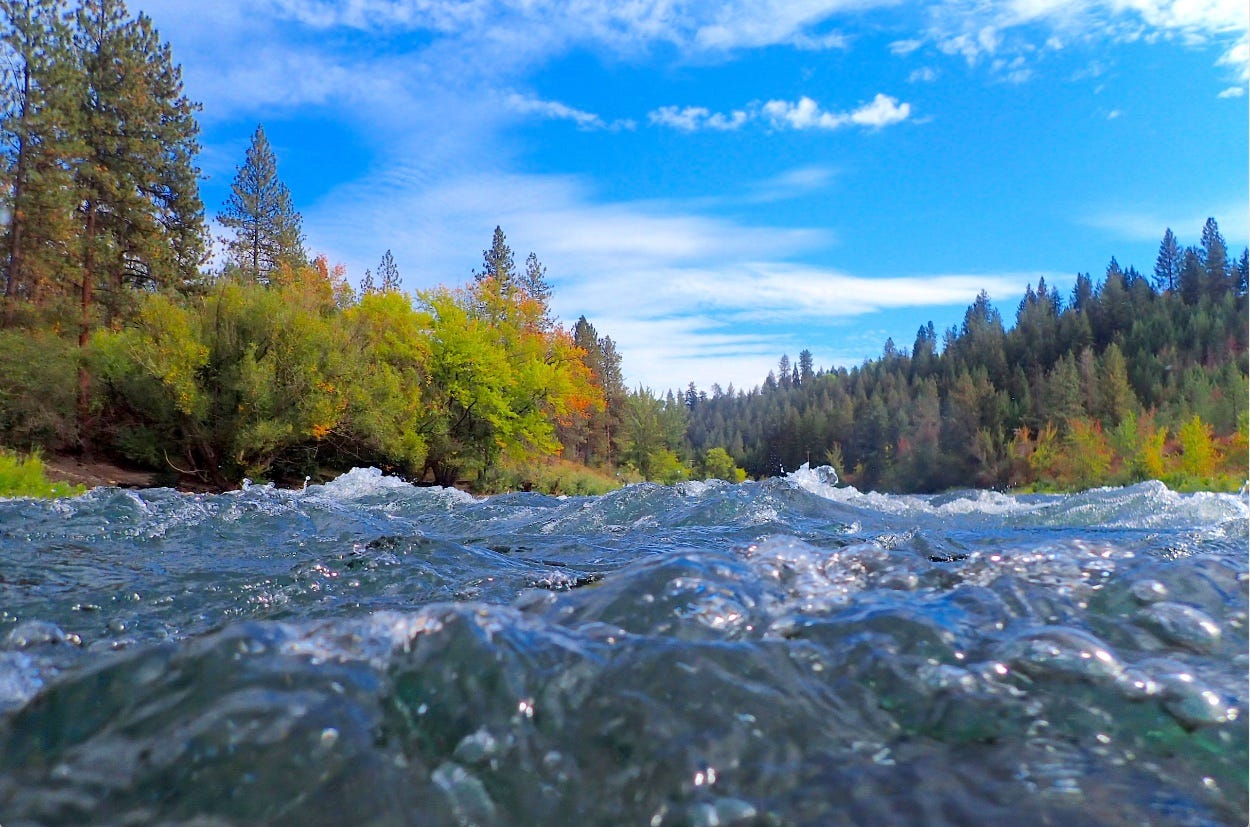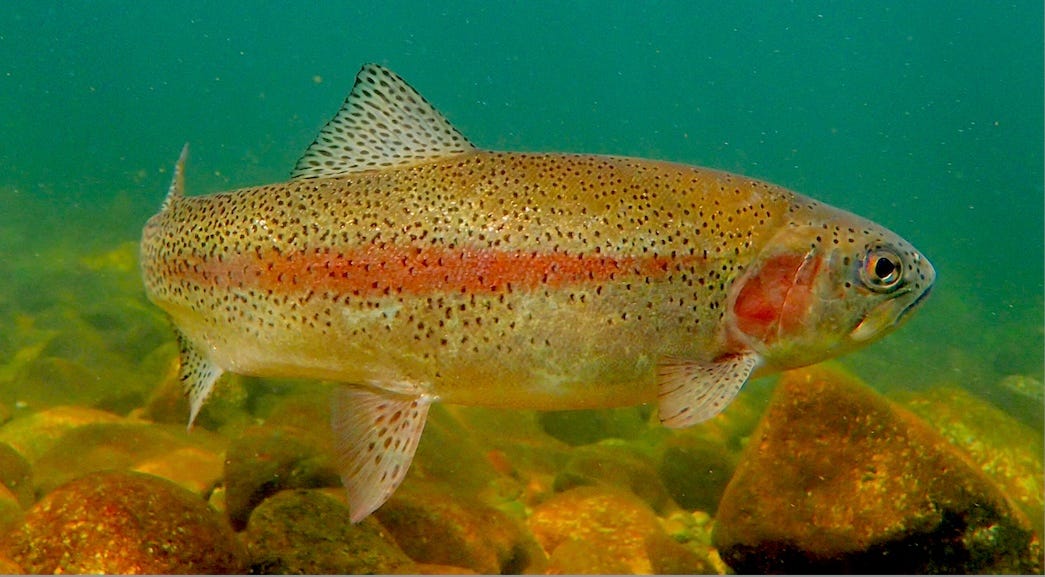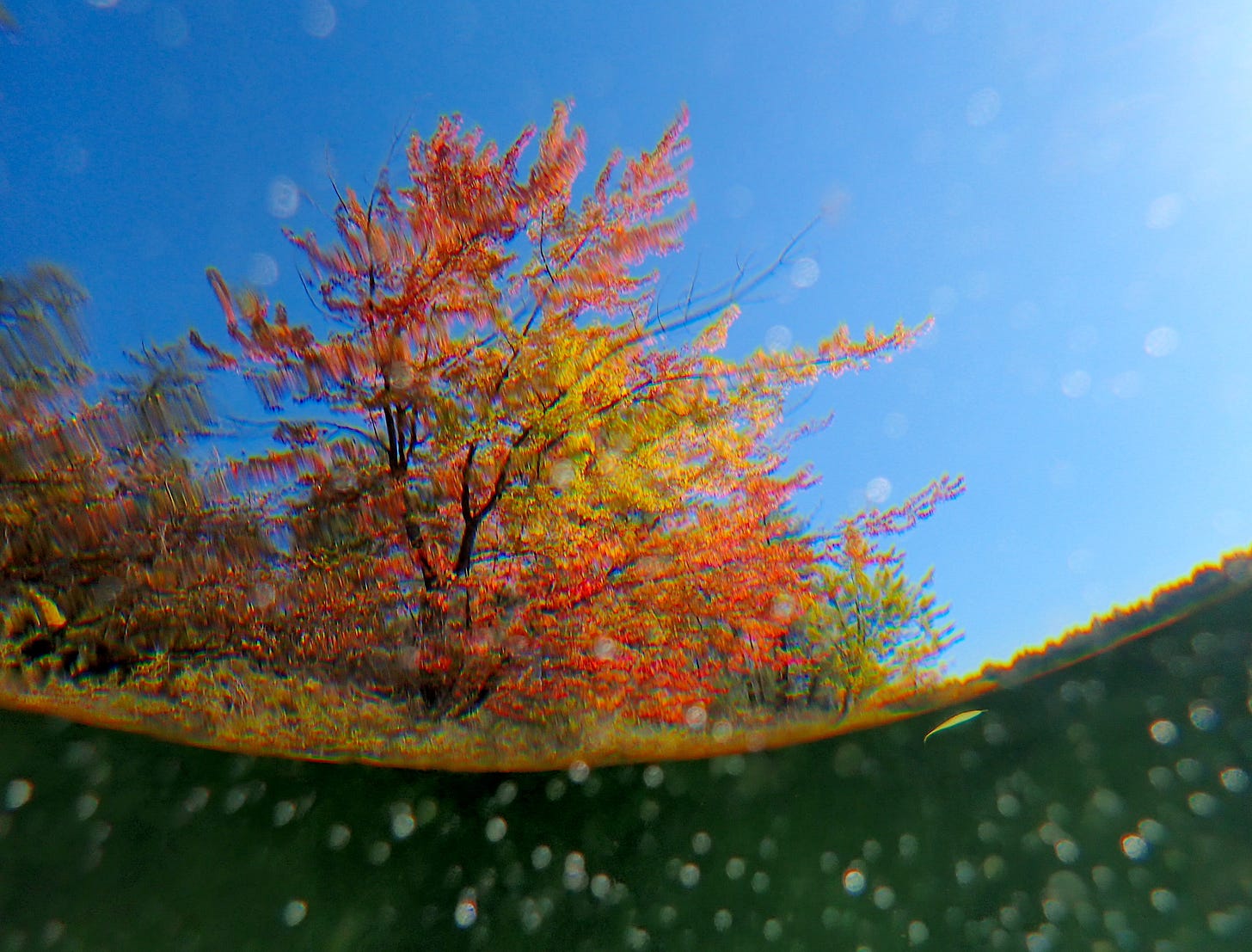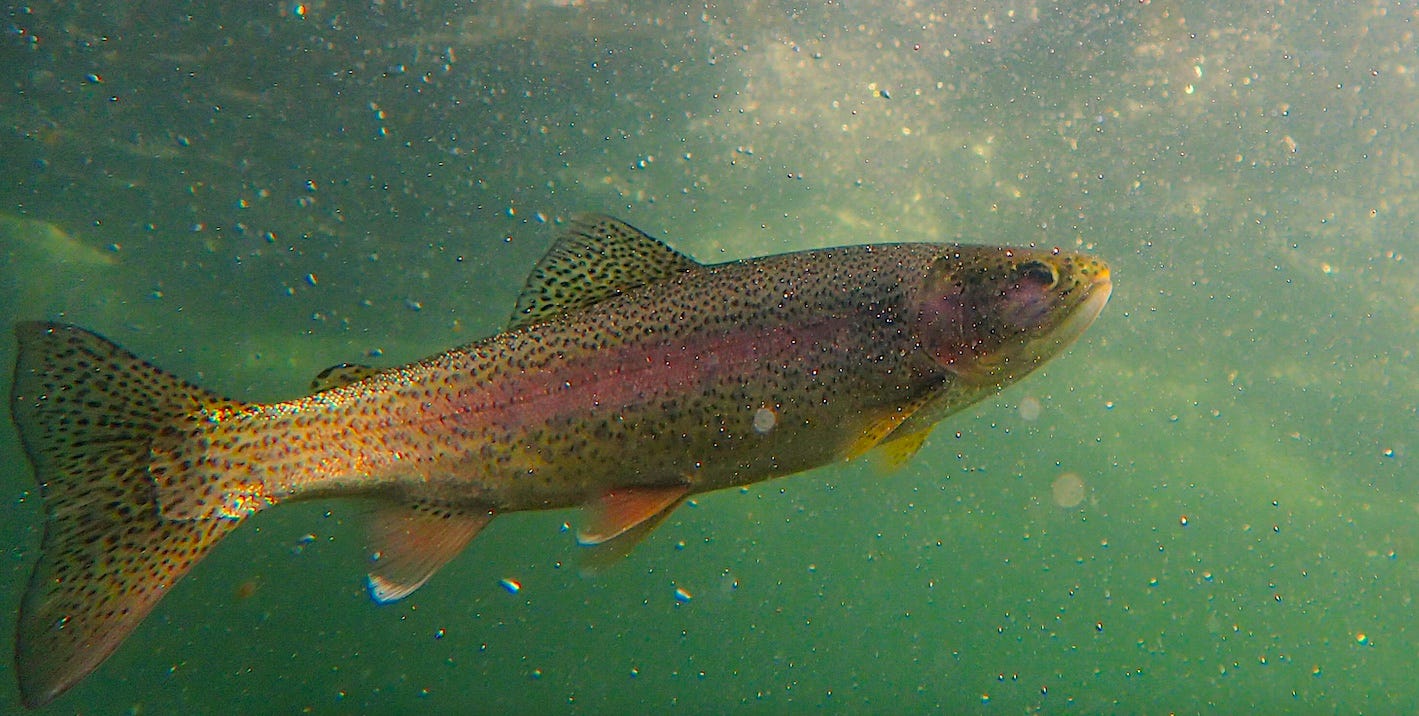Tuesday's postcard, and a look back at some wildly beautiful swims in the Spokane River
October 10, 2023
The resurrected Spokane River in west Spokane
Until next year….
As I write this morning it is still dark outside, 56 degrees, rain sweeping eastward from the Cascades and, according to the forecast, it’s not expected to get any warmer during the day. It’s better this way—the closure to outdoor swimming season that comes with a sudden loss of sunshine and a drop of 20 degrees.
When I jumped in the river last week, after returning from a few days in Colorado, the sun was shining but the water was so frigid it was giving me the sort of headache you can induce by eating ice cream too quickly. I briefly considered just swimming back to shore and wrapping my head in my towel. I resisted—partly because I would feel harpooned with shame, but mostly because I knew that after a minute or so my body and brain would adjust to the cold and I would enjoy the swim, which I did.
Still, there is a risk of hypothermia in swimming in a northern river, in October, without a wetsuit, and the risk is much greater if, when I get out, the sun is behind the clouds and the wind has kicked up. I’ve been there. I shake like a quaking aspen and require proximate access to a bathroom. I can barely speak. I must avoid complex math problems and challenging social situations for an hour or two.
The flip side—the physical, spiritual and psychological benefits of the outdoor swims—is why I do it. Plus, I’m a photographer and the challenge of doing photography in an open water environment is irresistible. You can read more about that, here, in my mid-September cover story “Fish Tales” for the Pacific Northwest Inlander.
A friend reminded me a couple days ago that the white settlers of Spokane first named the townsite Spokane Falls. Once the city began the grow, the “Falls” were dropped from the name in 1891. Lamentably, this was a not so subtle signal for the abuse the river would endure for decades to come—with untreated sewage being discharged in such quantities that the state health department, in 1935, declared mere contact with the river to be a public health hazard. (Given the obvious health hazards Spokane was forced to switch to the prolific Spokane Valley-Rathdrum Prairie aquifer as its source for drinking water in 1908).
“Oscar” the wild redband trout I was lucky enough to befriend and swim with last summer
It wasn’t until the 1970s—in the haste to try to bring Spokane into compliance with the federal Clean Water Act before it hosted the 1974 World’s Fair—that the city got serious about restoring the river. I have never lost sight of the fact that I’m one of the prime beneficiaries of that effort—along with thousands of others who now get to swim, frolic, float and fish in the river. It wouldn’t have happened without countless hours of hard work by several civic and environmental organizations, including the Spokane and Couer d’Alene tribes, the Spokane Riverkeeper, the Sierra Club, the Lands Council, and the hundreds of volunteers who annually help out with river cleanup projects.
“Gordo,” who let me swim with him for several days in August
These efforts are prosaic, but the results are beyond words. The fragile river is also a beast of nature, flexing with power and beauty and a wild cold breath that reminds me of its origins. God-willing, I’ll be back next year, around the first of June, to dive in again.
—tjc
p.s. I appreciate your interest in Rhubarb Salon, which is complimentary, but I hope you will consider a paid subscription to The Daily Rhubarb.
The fragile river is also a beast of nature, flexing with power and beauty and a wild cold breath that reminds me of its origins. God-willing, I’ll be back next year, around the first of June, to dive in again.











